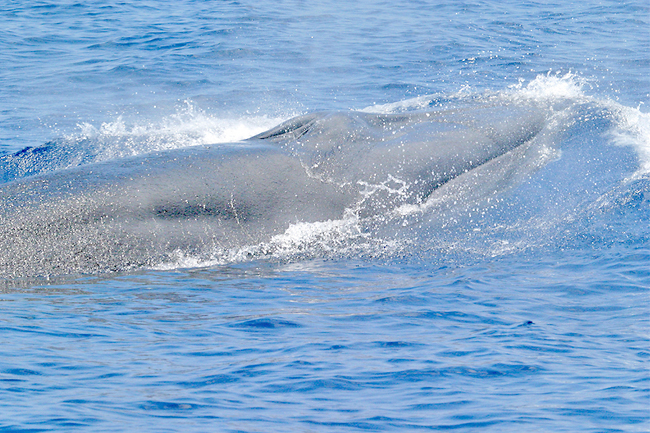Brady Dennis & Dino Grandoni
THE WASHINGTON POST – Early last year, researchers with the National Oceanic and Atmospheric Administration (NOAA) detailed a rare finding: After years of study, they had identified a new species of whale that has been seen only in the Gulf of Mexico.
Known as Rice’s whale or the Gulf of Mexico whale, the animal can grow to 42 feet long and up to 60,000 pounds – about the weight of a firetruck. Scientists long thought these were Bryde’s whales, which are found in oceans around the world.
But only in recent years did they confirm that the Gulf of Mexico whales are structurally and genetically distinct.
The newly designated whales also are at risk of extinction; the entire species has only about 50 known individuals, according to NOAA.
Recently, more than 100 marine scientists signed a lengthy open letter to the Biden administration, pleading for a range of additional protections for what they called “one of the most endangered marine mammal species” on the planet.
“Some of us have been trying to raise the profile of this whale for many years now,” said Anderson Cabot Center for Ocean Life Senior Scientist and Whale Researcher Peter Corkeron at the New England Aquarium. And yet, he said, too many people remain unaware of the peril it faces and the protections it desperately needs. “It is really just the forgotten whale at the moment.”

Specifically, the group wrote recently that as the Biden administration considers additional offshore oil and gas drilling in federal waters over the next five years, it should weigh such projects against the potential hazards they pose to Rice’s whales.
“Continued oil and gas development in the Gulf represents a clear, existential threat to the whale’s survival and recovery,” the group wrote in a letter to Interior Secretary Deborah Haaland and Commerce Secretary Gina Raimondo.
The species, which largely can be found in the DeSoto Canyon region of the gulf, is vulnerable to chronic exposure to seismic air gun blasts that accompany oil and gas exploration and can disrupt “activities vital to feeding and reproduction over large ocean areas”, the group wrote.
Exposure to oil spills, including events such as the massive Deepwater Horizon disaster in 2010, also threaten severe illness or death of marine mammals. The oil from such a spill can lead to lung or respiratory problems and coat the baleen that Rice’s whales use to feed.
“Oil and gas development has really created something of a house of horrors for the species,” said Marine Mammal Protection Director Michael Jasny, at the Natural Resources Defence Council.
Collisions with vessels pose another grave threat. At night, Gulf of Mexico whales rest in the upper reaches of the ocean, potentially leaving them in the path of ships. In 2009, a lactating female was found dead in Tampa Bay, probably killed by the blunt-force trauma of a ship strike.
“A number of shipping routes traverse the whale’s habitat along the northern Gulf, and the collision risk is likely to increase with new offshore oil and gas development,” the scientists wrote. “With abundance so low, the loss of even a single whale threatens the survival of the species.”
Decades of scientific effort went into the discovery of a whale species that swam for years under the noses of American scientists.
The Gulf of Mexico whale is part of a group of species called the “Bryde’s whale complex” that are difficult to distinguish from one another by sight.
The biologist Dale W Rice first detected the population in the 1960s after examining one stranded alive off the Florida Panhandle before it was towed to sea.
The Deepwater Horizon oil spill reignited scientific interest in the gulf’s marine mammals and other wildlife. Genetic samples from whales in the region suggested that an evolutionarily distinct lineage existed in the waters.
A break came in 2019 when a male washed ashore and died in the Everglades. A few months later, a team from the Smithsonian’s National Museum of Natural History exhumed the remains.
The distinct shape of the skull became crucial evidence that the whale represented a species new to science. It is the only large whale to live year-round in the United States (US) waters.
“This is the only great whale that belongs wholly, as it were, to the United States,” Jasny said. “And that gives us, I think, a particular responsibility for its protection.”
A letter on Thursday is not the first attempt to secure more forceful protections for the Gulf of Mexico whale.
Even before researchers officially declared the whale a distinct species, some scientists and environmental advocates were concerned about its prospects for survival.







